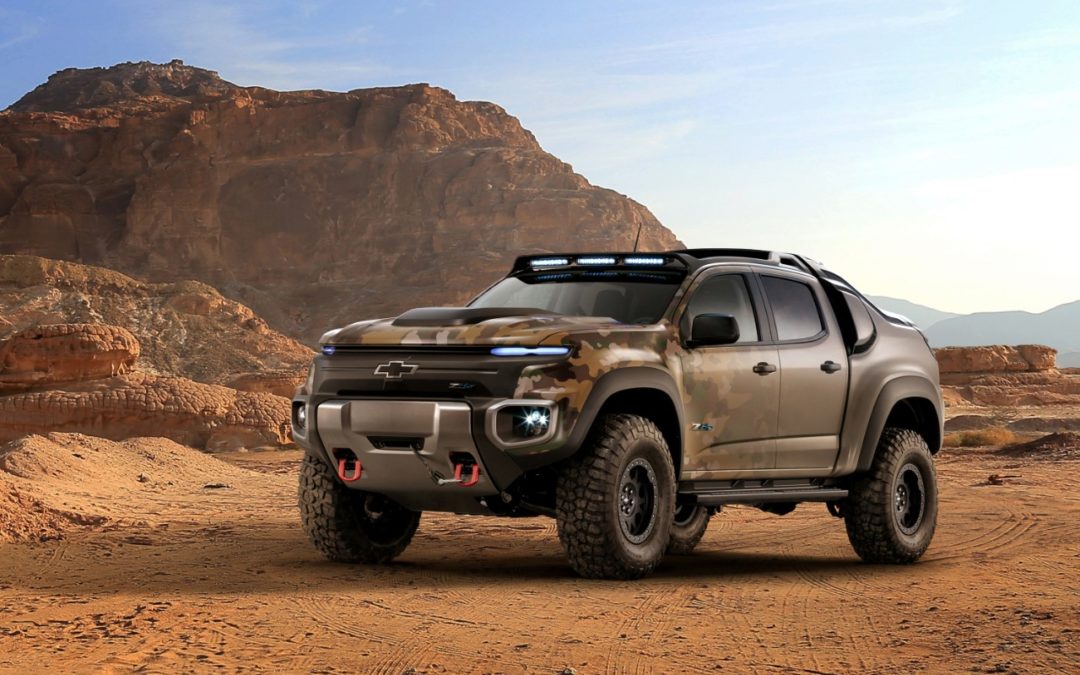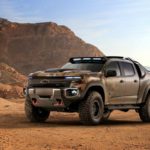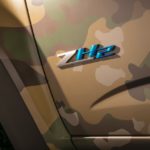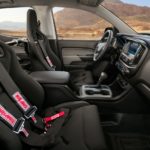The U.S. Army gets all the best toys. From rocket-equipped helicopters to hovercraft to Oshkosh’s L-ATV, there isn’t a modern machine our military can’t test.
The latest piece of forward-thinking technology comes from General Motors, and it doesn’t just look wild — lurking beneath the surface of its inflated panels is a truly remarkable powertrain. Chevrolet’s ZH2 vehicle is based on its Colorado pickup and has been co-developed with the U.S. Army’s Tank Automotive Research, Development, and Engineering Center (TARDEC).
Not only is this thing much larger than a standard Colorado — it’s 6.5 feet tall and 7 feet wide — it uses a zero emissions hydrogen fuel cell drivetrain. The only sound coming from this rig will be gravel crunching beneath its oversized tires. Apart from the electric powertrain, the ZH2 is equipped with flared wheel arches, a camouflage exterior, LED light bar, and plenty of extra ground clearance.
The vehicle was introduced at the fall meeting of the Association of the United States Army and is scheduled to run tests throughout 2017.
Read More: Legacy Classic Trucks Gives The Chevy Napco 4×4 A Makeover
“I’ve got to figure out how to get on the bases, so I can have some of the fun,” says Charlie Freese, who leads GM’s fuel cell program.
There are some benefits and drawbacks to a hydrogen-powered military vehicle. The most obvious benefit is its inherent stealth. Without those bright lights on, the ZH2 can creep along without the hum of a traditional gas or diesel engine. The water byproduct of hydrogen’s mix of water and oxygen could also be useful in desert climates.
Unfortunately, hydrogen fuel cells can’t be powered by readily available fuel sources and any mechanical issues will undoubtedly be harder to diagnose for an army engineer than a standard motor. If the American military were to make a switch to emissions-free vehicles down the road, it would need to train its maintenance staff for quick fixes.
The ZH2 uses a 92-kW fuel cell that produces 174 horsepower, sent to all four wheels via a single motor. That doesn’t sound like much for a go-anywhere-do-anything vehicle, and the GM is already considering additional motors at each wheel (like some modern supercars).
For those already wondered when American consumers can get their hands on this kind of technology, remember that Toyota’s Mirai uses hydrogen fuel cell power and Tesla is already at work on an EV pickup. It’s coming, folks.







